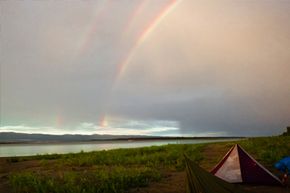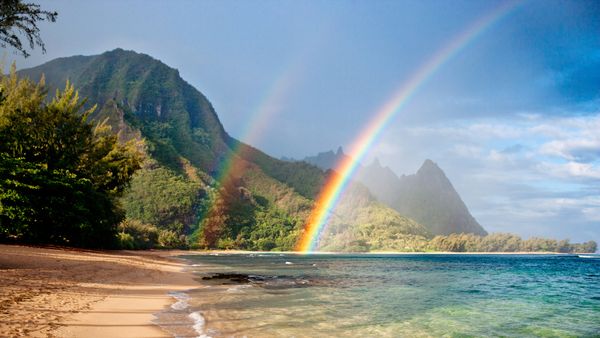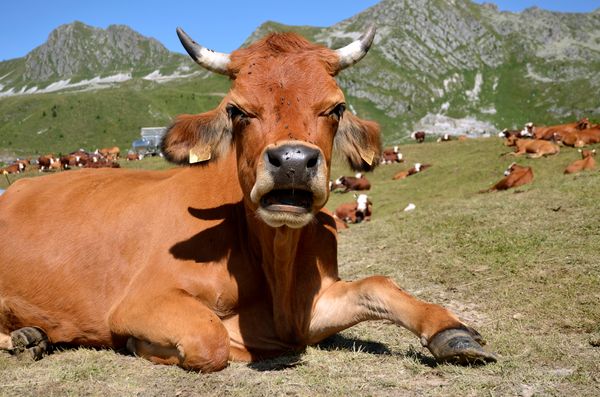Key Takeaways
- Triple rainbows are rare atmospheric phenomena.
- They occur when sunlight undergoes multiple reflections inside raindrops.
- These rainbows feature three distinct arcs of color, with the outermost being the faintest.
Charles Montgomery Burns (aka the evil Mr. Burns from TV's "The Simpsons") asks a similarly plaintive question in his autobiography "Will There Ever Be a Rainbow?" We'll do our best to answer it – and unlike Mr. Burns we won't use a ghostwriter.
Unlike ho-hum rainbows and even double rainbows (sorry, awe-inspired YouTubers, but they happen quite a bit), triple rainbows are not your run-of-the-mill weather phenomenon. In fact, they're so rare that prior to a 2011 image that we'll talk about later there had only been five verified reports of triple rainbows in 250 years [source: Byrd].
Advertisement
Let's get a quick tutorial in how rainbows work. When light (in this case, sunlight) enters a raindrop, it reflects once off the back of the drop, and then bends again as it leaves the drop [source: Mass]. This is when you see a single rainbow.
If light is reflected twice in the drop of water, you're going to get yourself a double rainbow [source: Byrd]. As we said earlier, double rainbows are not so unusual, because it's not that rare to have light coming from a couple of different angles.
But it's a way different story when it comes to triple rainbows. Technically the same idea applies – the water must reflect the light three times. Yet this is not so easy. There are specific conditions necessary to get the right light and atmosphere. According to Raymond Lee, a professor of meteorology at the U.S. Naval Academy, they include dark clouds and a shower of uniformly sized drops [source: Geere].
Here's the big difference between triple rainbows and double rainbows. With a triple rainbow, the third reflection is actually only visible in the opposite part of the sky. That also means the third arc of a triple rainbow is behind you, in the part of the sky where the sun is visible – not exactly the greatest conditions for spotting a rainbow. Adding to the trouble is that each reflection of the rainbow gets dimmer, so you see only a very light third arc [source: Geere].
Back to that picture that surfaced in 2011. After talk about the ideal conditions for triple rainbows, a few people got interested in trying to record some. Photographer Michael Grossman got some extraordinary photography of a triple rainbow in 2011 and, that same year, meteorologist Michael Theusner published a paper citing evidence that he captured a quaternary rainbow [source: Theusner].
The lesson here? If you really want to impress the Internet, post a video of yourself losing it over a quadruple rainbow.
Advertisement



